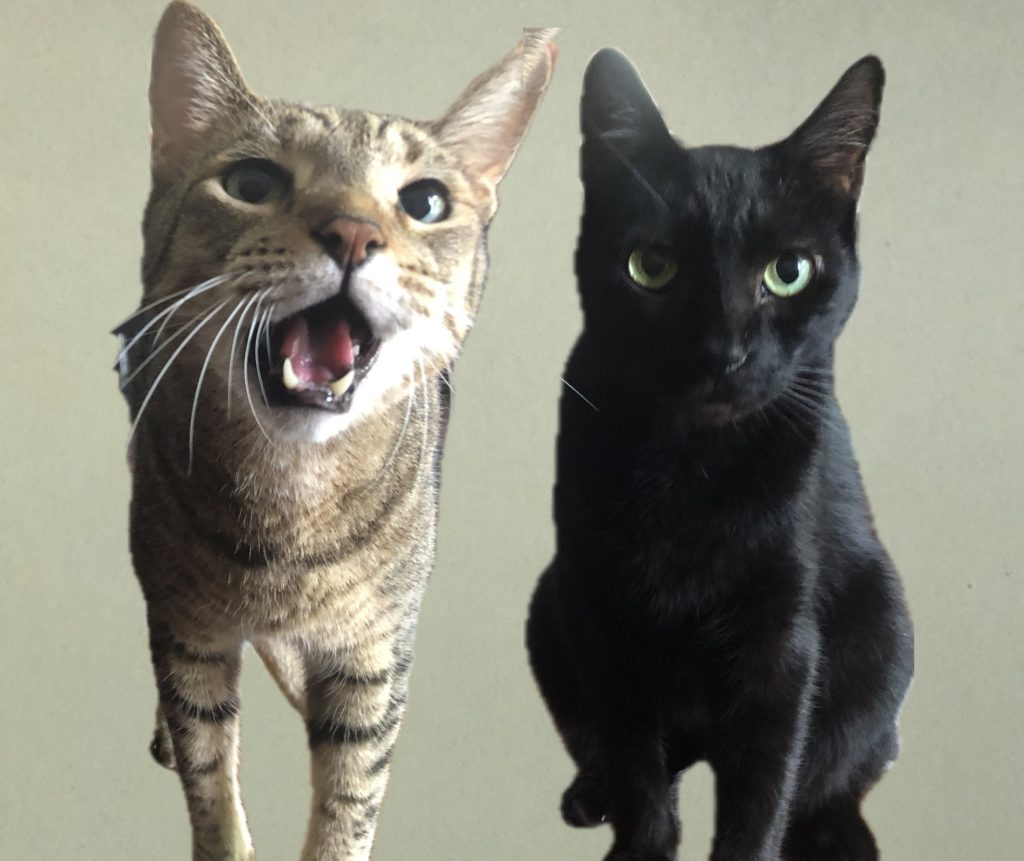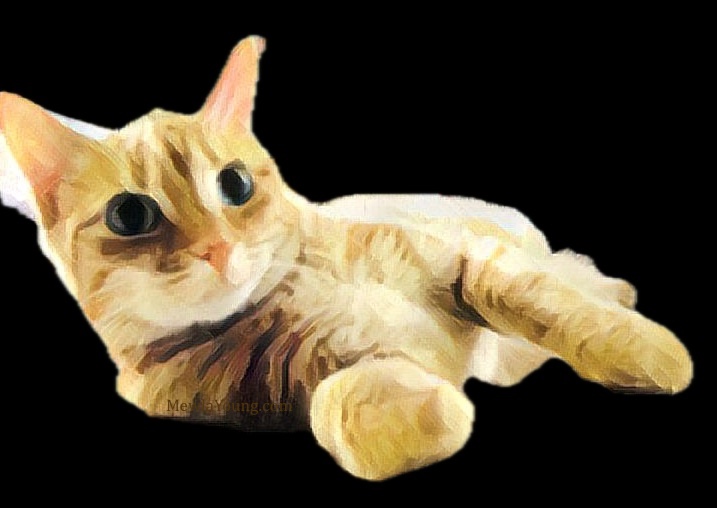Dear teenage humans,
Ginger Grrrl here.
It’s come to my attention that some of you really could use our help. The Centers for Disease Control surveyed teens to find out how you’re doing. It turns out that you teenagers –especially girls—deal with some heavy doo-doo way too often.[1] Teen girls said that they regularly deal with crass jokes, sexual harassment, and sometimes even violence from boys and men. In fact, over 11% of girls told the CDC that they were forced to have sex during the previous 12 months. WTFurball?
Given the trauma and harm you girls have to deal with, it’s no surprise then that 41% of girls surveyed said they’ve felt sad and/or hopeless. About half as many teen boys (21%) said they’d been depressed.[1]
But it gets worse, dearest teen people. Some of you seem to have no one to help you deal with your troubles. When asked about the past year [1]:
- About 22% of teen girls and 16% of boys were bullied at school.
- Many teen girls (17%) and boys (12%) planned how they would attempt suicide.
- Sadly, almost one in ten girls and one in twenty boys actually did try to kill themselves.

Teenagers have it really tough. Some of you may have parents or others who love you and look out for you. But sometimes that’s not enough. Sometimes parents and friends are too distracted to support you.
Mental health therapy can help you take care of yourself, but when people let you down, I bet some of you could use a hug from a soft fluffball like me. I’m not saying that we cats will solve your problems, but we can make life feel a little nicer.
I looked at the research, beloved teen, and pets have worked our magic to support many of you.
How Cats (and Other Pets) Can Help
I’ve told you in the past about animal-assisted therapy—when we pets visit and hang out with people in need (see https://mewlayoung.com/the-doctor-is-in/). Animal-assisted therapy has helped teenagers who are dealing with doo-doo, too. For example, one study of 153 teens and preteens who had been sexually abused found that animal visits helped make kids’ anxiety, depression, anger, post-traumatic stress disorder, and dissociation a little better.[2]
Some research divides teenagers into groups where only half receive animal-assisted therapy. Studies show that the teens who get to hang out with animals do a lot better than those who don’t. For example:
- A U.S. program for teens with “severe conduct disorder” found that visits from animals made kids less aggro. The pet visits also made teens more affectionate, nurturing, playful, and cooperative. [3]
- A group in Italy studied teens and pre-teens in a psychiatric hospital. These kids had problems like being depressed, having an eating disorder, and/or wanting to kill themselves. Animal visits helped kids function much better. For example, the teens were able to go to school more often.[4]
- Researchers in Spain studied teenagers in residential treatment for mental health problems. Those who had visits from animals had stronger social skills, showed more leadership, and had less hyperactive behavior compared to their peers who did not have animal visits.[5]
- Spanish teens in treatment for trauma (such as sexual abuse) who had visits from animals had less anxiety, depression, anger, PTSD, and dissociation.[6]

Your Mini-Therapist
Cherished teen, we kitties can be very nurturing. A new study of cat caretakers, for example, showed how “emotionally in-tune” cats are with their people.
For instance, human caretakers said that “sharing time with my cats is one of the highlights of my day.” They also said that their cats:
- “Are there whenever I need to be comforted,”
- “Help me get through tough times,” and
- “Are one of my best friends.”[7]
Now Back to Teenagers…
This brings me back to the teens who feel sad or hopeless and to the precious kids who thought about wanting to die. If animal-assisted therapy helps teens in group settings, I know we could help you, too.
Caring teen, if your parents won’t let you adopt a cat, maybe there’s a café cat or animal shelter you could visit. The cats there will do their best to make you laugh. Stray cats in your neighborhood may need love, too. Read about how stray cats helped the TrapKing Sterling Davis get through a rough childhood at TrapKing.
Cats in feral colonies also need looking after.
Learn about feral cat colonies from organizations like Alley Cat Rescue (see https://mewlayoung.com/louise-holton/) and Neighborhood Cats (https://www.neighborhoodcats.org/resources).
Cats who are raised with kindness and respect have lots of love to give. For hints from me on how to choose and care for a cat, see https://mewlayoung.com/choosing-a-cat/.
A Plea on Behalf of Cats
Research by Dr. Kristyn Vitale showed that humans bond with their cats in the same way they bond with human babies (see https://www.pbs.org to learn more). Dr. Vitale is now researching how cats can help children with development disorders.
Different types of pets, including horses and even dogs, can help teens. However, we cats aren’t just soft and adorable, we’re amazing listeners. It’s time for more cats in animal assisted therapy program to support teens!
In Summary…
In summary, some of you teens could use a buddy to love. Many of you—and much too many girls—are dealing with trauma, harassment, and violence. We all need to try a little harder to help and protect you.
You teenagers deserve to experience our greatness, whether it’s through a visit to a cat cafe or shelter, or, if you’re lucky, by adopting your own cat companion. Your own mini-therapist is waiting.
Do you think cats can help teens deal with anxiety and depression?
Please share a comment below.
Written by Ginger Grrrl with a little help from Mewla Young, originally published in April 2024.
REFERENCES
- Center for Disease Control (2022). Youth Risk Behavior Survey, United States, 2021. https://www.cdc.gov/healthyyouth/data/yrbs/index.htm
- Dietz, T. J., Davis, D., & Pennings, J. (2012). Evaluating animal-assisted therapy in group treatment for child sexual abuse. Journal of child sexual abuse, 21(6), 665-683. https://pubmed.ncbi.nlm.nih.gov/23194140/
- Katcher, A., & Teumer, S. (2006). A 4-year trial of animal-assisted therapy with public school special education students. Handbook on animal-assisted therapy: Theoretical foundations and guidelines for practice, 2, 227-242. https://journals.sagepub.com/doi/10.1177/0033294115626633
- Stefanini, M. C., Martino, A., Allori, P., Galeotti, F., & Tani, F. (2015). The use of Animal-Assisted Therapy in adolescents with acute mental disorders: A randomized controlled study. Complementary therapies in clinical practice, 21(1), 42-46. https://pubmed.ncbi.nlm.nih.gov/25701449/
- Balluerka, N., Muela, A., Amiano, N., & Caldentey, M. A. (2015). Promoting psychosocial adaptation of youths in residential care through animal-assisted psychotherapy. Child abuse & neglect, 50, 193-205. https://pubmed.ncbi.nlm.nih.gov/26443670/
- Balluerka, N., Muela, A., Amiano, N., & Caldentey, M. A. (2014). Influence of animal-assisted therapy (AAT) on the attachment representations of youth in residential care. Children and Youth Services Review, 42, 103-109. https://psycnet.apa.org/record/2014-21557-014
- Pet Partners in Collaboration with Dr. Lori Kogan (2024). Exploring the Cat:Human Bond Through the Special Impact of Therapy Cats. https://petpartners.org/wp-content/uploads/2023/10/EXPLORING-THE-CAT-HUMAN-BOND.pdf





I’m shocked by these statistics. I hope hoomans are listening to you, Ginger!
These statistics are very upsetting but it’s good to know that mental health and animal therapy services are there to help. We need to do a better job protecting our girls and also raising our boys to be decent people.
During my teen years I didn’t have my own cat, but we did have family cats that were always there listening and comforting. My horses were probably my best friends as I believe that to have a horse is to be one with that horse. But not everyone can have a horse. Cats are so much easier to house and care for and every bit as comforting.
Thanks for the statistics, they are alarming. I’m glad I didn’t have to grow up with social media always judging me.
Thank you for your article! This is such an important topic. Currently, the Human-Animal Interaction Lab at OSU is running a Cat-Training Research Program for Children with Developmental Differences to examine outcomes for children and their cats. We are currently collecting data for this project, but you can learn more about the project on the HAI website here: https://thehumananimalbond.com/current-studies/family-cat-training-program-for-children-with-developmental-disabilities/
Thanks for pulling together research for teens. I’m in my 20’s now but my cat helped me through my teen years. Thanks for the articles about mental health and cats which make this a really excellent website with pretty photos too.
Ginger and your brothers sure can help ..some humans would feel like comfortable to talk and tell secrets to a fluffy friend than to another human..good luck girrrrl and boys
Great article Ginger! I didn’t know about this research. My cat helped me through so much when I was a teen and was there when I need to be comforted like the other cat owners said.
My kids love our cats and I’m sure they share more with the cats then they do with me. I will show them this article.